.
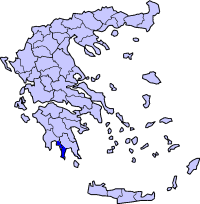 |
 |
The Mani Peninsula is a region in Greece. The Mani is the central peninsula of the three which extend southwards from the Peloponnese in southern Greece. To the east is the Laconian Gulf, to the west the Messenian Gulf. The peninsula forms a continuation of the Taygetos mountain range, the western spine of the Peloponnese.
The terrain is mountainous and inaccessible. The name "Mani" is thought to have originally meant "dry" or "treeless." Until recent years many Mani villages could be reached only by sea. Today a narrow and winding road extends down the west coast from Kalamata to Areopoli, but on the east coast there is no substantial road south of Gytheio.
Administratively, The Mani is divided between the districts of Laconia and Messenia, in the province of Peloponnesos, but in ancient times it lay entirely within Laconia, the district dominated by Sparta. The Messenian Mani receives somewhat more rainfall than the Laconian, and is consequently more fertile. Messenian Maniot surnames almost uniformly end in -eas, whereas Laconian Maniot ones in -akos.
Neolithic remains have been found in the many caves along the Mani coasts. Homer refers to a number of towns in the Mani region, and some artifacts from the Mycenean period have been found. The area was occupied by the Dorians in about 1200 BC, and became a dependency of Sparta. When Spartan power was destroyed in the 3rd century, the Mani was self-governing for a time before being absorbed into the Roman Empire in the 2nd century.
As the power of the Byzantine Empire declined in the 9th century AD, the peninsula drifted out of the Empire's control. The fortress of Maini in the south became the area's centre. Over the subsequent centuries the peninsula was fought over by the Byzantines, the Franks and the Saracens.
After the fall of Constantinople to the Fourth Crusade in 1204, Italian and French knights (known to the Greeks as Franks), occupied parts of the Peloponnese. In 1249 the Mani was occupied by the Venetians, who made it one of the twelve baronies of the Principality of Moreas and built the fortresses of Mystras, Passavas, Gustema (Beaufort) and Megali Mani.
In 1460 Mystras fell to the Ottomans, but the Mani was not subdued and retained its internal self-government in exchange for an annual tribute. Local chieftains or beys governed Mani on behalf of the Ottomans. As Ottoman power declined, the mountains of the Mani became a stronghold of the kleftes, bandits who also fought against the Ottomans. There is evidence of a sizeable Maniot emigration to Corsica sometime during the Ottoman years.
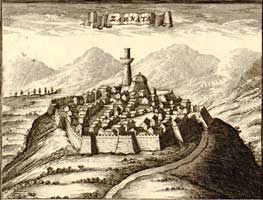
Zarnata Castle near Kampos , around 1690
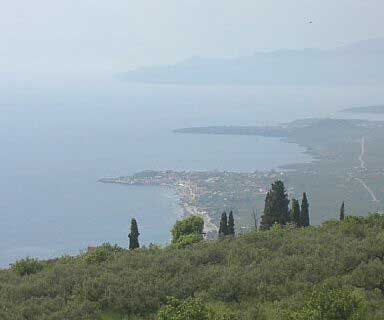
The coastline of the Mani Peninsula. View of the coast from the hills above Agios Nikolaos [Source]
The last bey of Mani, Petros Mavromichalis was among the leaders of the Greek War of Independence. He proclaimed the revolution at Areopoli on 17 March 1821. The Maniots contributed greatly to the struggle, but once Greek independence was won they wanted to retain their local autonomy. During the reign of Ioannis Kapodistrias they violently resisted outside interference.
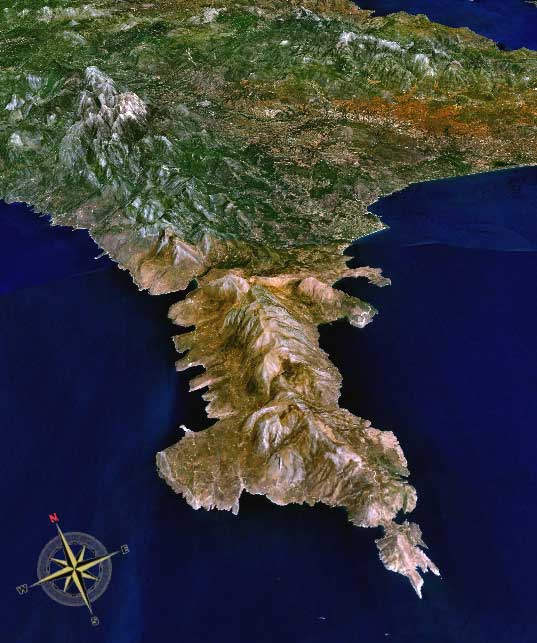
Mani Peninsula Satellite image
The Mani's local autonomy was abolished in 1870, and the area gradually became a backwater as the inhabitants abandoned the land through emigration. It was not until the 1970s, when new roads led to the growth of the tourist industry, that the Mani began to regain population and become prosperous. Maniots were known for their obstinate character, conservative views, sometimes extreme frugality, and their zealous safeguarding of the family property.
Despite the region's aridity, Mani is known for unique culinary products such as glina or syglino (pork or pork sausage smoked with aromatic herbs such as thyme, oregano, mint, etc. and stored in lard along with orange peel), and what is probably the world's best extra-virgin olive oil, soft-pressed from partially ripened olives of the Koroneiki varietal that are organically grown on mountain terraces.
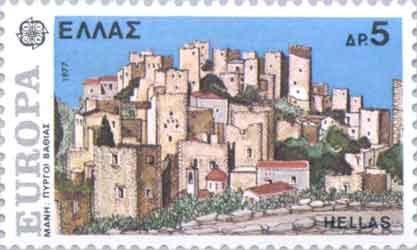
Today the Mani's coastal villages are full of cafes and souvenir shops. The peninsula attracts visitors for its Byzantine churches, Frankish castles and stunning scenery. Furthermore, the famous towers of Mani are significant tourist attractions. Gytheio, Areopoli, Kardamyli and Stoupa are filled with German and other tourists during the summer months.
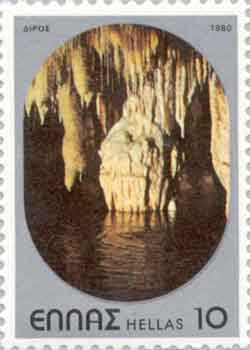
The Neolithic Cave of Diros
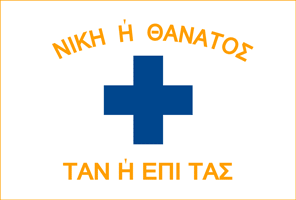
Flag of Mani, "Niki i Thanatos" (Victory or Death) and "Tan i epi tas" ( Either come back with your shield, or on it) Spartan mothers saying this to their sons as they left for war.
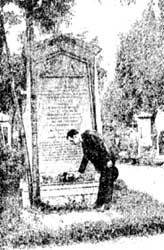
The Grave of Ilias Katsakos Mavromichalis in Munich / Germany who died 8.11.1836 from Cholera, a visitor of the Grave added the following inscription
Na mouna pouli na petaga na pigaina t'apsilou
n'agnanteua to pelago kai ta vouna tis Manis
I wished to be a bird flying high
to see the sea and the mountains of Mani
Murrays Handbook of Travels 1854
.
Maina. As early as the reign of Constantine Porphyrogenitus, the Eleuthero-Laconians (who had been enfranchised from the dominion of Sparta by a decree of the Roman senate) had acquired the name of Mainotes, from a place called Maina, near Cape Taenarus.
They continued the worship of the Pagan deities 500 years after the rest of the Roman empire had embraced Christianity, and were not finally converted until the reign of the Emperor Basil (A.D. 867-886). They boast of their descent from the ancient Spartans; and the histories of Leonidas and Lycurgus, partly as saints and partly as robbers, still figure in their popular traditions. The whole district of Maina, including Kakaboulia, is formed by the branches of Mount Taygetus, and, with the exception of a long tract of low coast, called by the Venetians Basset Maina, is mountainous, and for the most part barren.
Mount Taygetus, famous in all ages for its honey, is formed of a slippery rock, so hard as not to be broken without difficulty, and bristled with little points and angles, on which the gentlest fall is attended with danger. The population is distributed into small villages, while here and there a white fortress denotes the residence of the chief.
Maina was never thoroughly conquered by the Turks, and its inhabitants were as really independent of the supreme government, as the Scotch Highlands were down to the middle of the 18th century. They paid only a nominal tribute and a nominal allegiance to the Porte. They eagerly joined the Greek insurrection of 1821, and formed as important a part of the insurgent forces as did the Highland clans of the army of Charles Edward.
Maina was divided under the Turks into 8 hereditary captaincies, or what in other countries would be termed lairdships, seignories, &c. The government, in many respects, strikingly resembled the ancient feudalism of Scotland. The jurisdiction was long administered by an assembly of old men, from whom the protogeron (arch senator) was annually chosen. The misbehaviour of the last protogeron led to the abolition of the office; after which period Maina was nominally governed by a bey, chosen by the capitani among themselves, but who received his investiture from the Capitan Pasha.
In 1776, Maina was separated from the Pachalik of the Morea, and placed, like the Greek islands, under the protection of the Capitan Pasha ; and on this occasion Tzanetachi Kutuphari was first raised to the dignity of Bey by a firman, which constituted him chief and commander of all Maina for the Porte. He had not enjoyed this post more than two years, when, having incurred the displeasure of the Capitan Pasha, through the intrigues of his dragoman, he was compelled to quit Kitries, and to take refuge in Zante. Through the intervention of the French ambassador, he obtained his pardon, and returned to Maina, where Mr. Morritt visited him in the spring of 1795. At that time Tzanet Bey, of Mavrovuni, in the canton of Marathonisi, enjoyed this invidious office, and he is stated by M. Pouqueville to have held it for 8 years ; at the end of which he was, by rare good fortune, permitted to retire quietly to his patrimony, and to end his days in peace as a capitanos. His successor, Panaghiotti Kumunduro, after holding the office for three years, fell under the displeasure of the Porte, and was, in 1802, a prisoner at Constantinople.
His successor was Antony Gligoraki, of Vathy; after him came Con- 1 reduce them to despair. The terrified stantine Bey ; and at the breaking out I (Kumunduro) fled with his land forces, of the revolution, the ruling Bey was Pietro Mavromikhalis, afterwards so celebrated in the annals of the revolutionary war, and whose son, George Mavromikhali, assassinated Capod'Istria in the midst of his guards in October, 1831.
The inhabitants of no district have ever been reckoned so ferocious and cruel as those of Mesa Maina, the country of Kakaboulia, or Evil Counsel,
Links
| Ancient Greece
Science, Technology , Medicine , Warfare, , Biographies , Life , Cities/Places/Maps , Arts , Literature , Philosophy ,Olympics, Mythology , History , Images Medieval Greece / Byzantine Empire Science, Technology, Arts, , Warfare , Literature, Biographies, Icons, History Modern Greece Cities, Islands, Regions, Fauna/Flora ,Biographies , History , Warfare, Science/Technology, Literature, Music , Arts , Film/Actors , Sport , Fashion --- |
Retrieved from "http://en.wikipedia.org/"
All text is available under the terms of the GNU Free Documentation License


